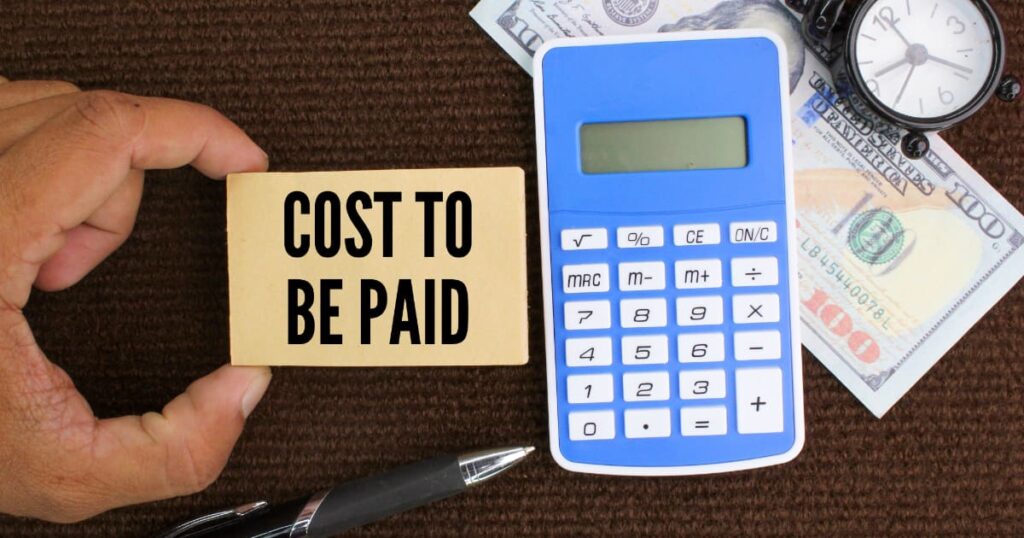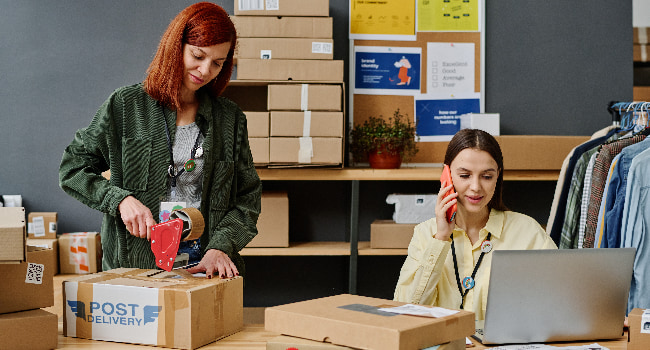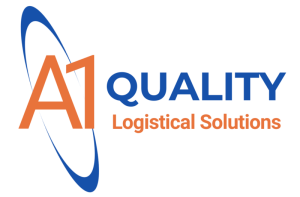A1 Quality Logistical Solutions

- By Haley
- August 12, 2025
Table of Contents
Key Highlights
- Discover how pricing structures of third-party logistics (3PL) providers directly influence your bottom line.
- Dive into the variety of logistics services and cost elements shaping 3PL expenses in 2025.
- Understand which variables—such as order volume, storage space, and transportation services—play a critical role in determining 3PL costs.
- Compare popular 3PL pricing models in the United States using an easy-to-read text table.
- Gain practical insights into selecting and budgeting for 3PL providers to optimise supply chain operations.
- Explore answers to common questions about logistics expenses for businesses.
Introduction
Logistics operations and supply chain management are getting more important. Companies now need to keep up with new customer needs and also manage shipping costs. Third-party logistics (3PL) companies help a lot with this. They offer flexible ways to make work smoother and cheaper. By 2025, knowing the costs that come with 3PL providers will be key to planning well. This guide covers how pricing works, important services, and the main things that affect cost. It helps your business choose the right time and way to use 3PL outsourcing for your logistics services and supply chain.
Understanding 3PL Companies and Their Role in Modern Business
Third-party logistics (3PL) companies are changing the way that supply chain operations work. These logistics companies offer special plans to fit different business needs. They handle things like transportation services and inventory management. This lets organisations focus more on what they do best.
When business owners use outsourcing for things like warehousing or reverse logistics, they can make their operations work better. With new technology, 3PL providers can now give services that grow and change with the business. This helps businesses be ready for changes in demand and keep growing, even in tough markets.

What Is a 3PL Company?
Third-party logistics companies handle logistics operations for other businesses. They look after tasks like warehousing, inventory management, and moving goods from one place to another. These providers fit in with your business in a way that works best for you, giving solutions made just for your supply chain needs.
If you need help with storage space, or more advanced logistics services such as reverse logistics, 3PL companies can help in all parts of order fulfillment. For instance, if you run an e-commerce business, you might use a logistics company for managing customer orders using an order management system. This helps your business meet delivery deadlines and raise customer satisfaction.
When you team up with a 3PL provider, you can avoid the trouble and cost of handling logistics yourself. This not only cuts down on shipping costs but also helps to keep your supply chain operations smooth. It is good for companies of any size and from any industry.
How Third-Party Logistics Supports Business Growth
Supply chain management with 3PL providers can help your business work better and grow more easily. These providers take care of things like checking inventory, storing goods in warehouse locations, and moving products with their logistics services. This means you do not have to do these tasks and can put more focus on new sales channels for your online store.
Think about what happens if the customer orders in your online store go up fast during sales. A 3PL company will use their industry expertise to manage the warehouse locations in the best way. They help make sure there are no hold-ups by sending out customer orders fast and right. This will boost your operational efficiency and help your team handle big changes in order volume.
When you work with a 3PL provider, you also get help with rules and special needs in your supply chain. They help set up new solutions, keep you up to date with what the rules need, and find new places to sell your products. By giving these supply chain jobs to experts, your business can deal with market changes better and always give a good customer experience, no matter what comes next.
Common Misconceptions About 3PL Providers
Many people think that when you use a 3PL provider, you lose control of your logistics operations. But in fact, the real story is different. Most modern logistics providers work as part of your business. They bring in new technology and help keep things running well in your daily work.
Some also say 3PL services cost too much for small groups. This is not always right. There are volume-based pricing options and pay-as-you-go plans now. These give SMEs a way to get good help with their customer fulfillment without spending too much money.
Another idea going around is that 3PL means customers do not get good care anymore or that customer experience gets worse. This is not true for companies who team up with logistics providers that put customer satisfaction and high service levels first. Many of these providers use warehouse management software to help with order processing. It makes sure that customers get their shipments on time and helps keep things right.
Now, let’s look at what 3PL providers do for your business and how these key services give your team support each day.
Key Services Offered by 3PL Companies
3PL providers offer many different logistics services that help make your supply chain management better. These include things like inventory management and how returns are handled. Each service plays a role in making sure your customers are happy.
These logistics providers also help with warehousing, transportation management, and shipping. All of these work together to make sure customer orders are handled the right way. When you use these services in the whole process, your business can see better costs, faster times, and smoother supply chain management for everything you do.

Inventory Management Solutions
Good inventory management is important for any business. 3PL providers help companies keep the right amount of products in stock. These experts use advanced inventory management systems that give real-time updates and help make reordering easy.
For example, a company can let a 3PL provider handle its supply chain needs. This helps the business avoid having too much or too little product. Logistics providers work to make sure the inventory on hand matches what is expected to sell. This helps use resources better and reduces waste.
With these systems in place, businesses can improve the accuracy of order fulfillment. They also stay ahead of what customers want, which leads to better customer satisfaction. When inventory management is handled by a trusted 3PL, your team is free to work on new products and grow different sales channels, without extra worry over supply chain problems or stock levels.
Warehousing and Storage Options
Efficient use of warehouse space is a main service offered by 3PL companies. These providers run distribution centers that can grow or shrink to store your goods based on need. This helps adjust to changes in inventory size.
Think about an e-commerce business that gets different order amounts over time. When they work with a 3PL provider, they can use many warehouse locations. This means they do not need to spend money to set up their own warehouse. The logistics services help them handle demand without the big upfront cost.
Also, modern warehouse management software is used to track everything. This keeps the process in check and helps stop things from getting lost. By letting a 3PL manage its warehousing, a business gets more flexibility with logistics. They do not need to put money into expensive buildings. This makes it simpler to grow and move into new places around the world.
Order Fulfillment Processes
3PL providers are great at managing the hard parts of order fulfillment. They use their knowledge and good systems to make sure your customer orders are handled, packed, and sent out in the right way. Their order management tools help with this, making the job smooth and quick.
It does not matter if you are shipping large amounts or just sending out one order from an online store. A fulfillment center can help get the job done right every time. They make sure orders are correct and get to your customers on time. For those who have peak times during the year with more sales, working with skilled providers who know how to handle many orders fast can make a big difference.
You can also pick options like custom packaging. This not only helps your brand look good, but also makes customers happier when they get their orders. Plus, it does not slow down how things work. If you let 3PL experts take care of your order processing, you save time and help people have a better experience with your brand.
Now, let’s look at transportation services to see how 3PLs manage shipping in a smart and smooth way.
Shipping and Freight Management
Good shipping and freight management play a big part in keeping logistics operations running well. This helps make sure that customer orders get delivered on time. Using the right transportation management tools helps cut down shipping costs and helps improve operational efficiency. Many logistics providers use their industry expertise to work out better shipping rates with freight forwarders. By doing this, businesses can spend less and get better service levels at the same time. Paying close attention to packaging and shipping can make the customer experience better, which then helps with customer satisfaction and keeping customers coming back. Spending money on these things not only helps with your current inventory management, but it also gets your business ready to grow bigger in the future.
Returns and Reverse Logistics Handling
Returns management is important for customer satisfaction and making logistics operations run well in ecommerce businesses. Good reverse logistics handling helps with fast order processing when items come back. This way, returned products get back to inventory levels quickly.
When the company uses new technology like an inventory management system, it can handle returns better. This cuts costs for shipping and does not take up extra storage space. As a result, the bottom line gets better for business owners. It also helps the customer experience, so people are more likely to come back and buy from different sales channels. Streamlined reverse logistics make customers happy and help ecommerce businesses grow.
Main Factors That Influence 3PL Pricing
Several important things decide the price for third-party logistics (3PL) services. The type and amount of goods you ship matter a lot. This can change how much work and storage space you need. The amount of storage space needed also affects the cost. If you have a lot of inventory, you will need more warehouse room, which costs more.
Where you are also changes the cost. If you are close to distribution centers, shipping will be cheaper. How logistics services are set up will shape the price too. Service level agreements tell what you should expect from the service, and these can change how you are charged. The level of technology used in your service can help lower costs if it helps work go faster, but it could also bring new costs. All these parts come together to set the final price you pay for 3PL services.

Type and Volume of Goods
The type and amount of goods have a big impact on the pricing of 3PL services. Each product category needs its own way of handling and storage. For example, perishable items need special storage to keep the inventory levels right and help with customer satisfaction. Order volume also affects shipping costs and the way logistics operations work. If you send out a lot of products at one time, you may get lower shipping rates. This can change the cost structure of all the logistics operations. It also shows why having a good fulfillment strategy is so important for your business.
Storage Space Requirements
Managing storage space well is key to making logistics operations better. The kind and amount of goods a business has will help you know what warehousing solutions you need. For example, when you work with products that move fast, it helps to use distribution centers in the right places. This keeps shipping costs low and helps you fill orders quickly.
Making simple changes to warehouse space can increase operational efficiency. It also changes inventory levels and makes customer satisfaction better. When a business uses a storage space plan made for its needs, it helps the supply chain and supply chain management. This keeps shipping rates in check and helps the bottom line get better.
Geographic Location and Network Reach
The place where a 3PL provider set up be very important for logistics operations and the total shipping costs. Companies that be close to big transportation hubs can cut shipping costs. They can also send out orders faster, which helps with customer satisfaction. Also, the network is important. A big reach with many distribution centers can help order fulfillment and planning the best routes. This way, things be more smooth in the supply chain and can boost supply chain management. All this has an effect on operational efficiency. Business owners should look at these things before they pick a logistics partner. In the end, it’s best if their network fits the company’s shipping strategy and can handle changes in order volume.
Service Level Agreements and Customization
Service level agreements (SLAs) are the key to setting clear expectations between businesses and logistics providers. SLAs help with operational efficiency because they lay out what will happen, like delivery times, order accuracy, and inventory levels. In the supply chain, these agreements make sure that everyone knows what to do and when to do it. With SLAs, there are also options to change logistics services, so each business can get what they need. This helps boost customer satisfaction.
When SLAs are set up to match real goals, such as needing faster shipping or better inventory management, the fulfillment process gets better. This clear plan makes the whole supply chain work more smoothly. It also helps cut down on costs and improves the way companies manage every part of their supply chain. By focusing on what matters most, SLAs give businesses the tools they need to use good logistics services, raise service levels, and keep customers happy.
Technology Integration and Automation
The use of new technology and automation in logistics operations helps make things run better and faster. When businesses use advanced warehouse management systems (WMS), it makes inventory management easier. It also helps with order processing, which leads to better customer satisfaction. Automation tools like RFID and barcode scanning let people track stock levels more accurately. They help cut down on mistakes people might make. Transportation management software is also a good way to keep shipping costs low and help orders arrive on time. By using these types of tools, businesses can cut down on problems in operations. They can also build a better fulfillment strategy and stay ahead of others in the fast-changing world of ecommerce.
Typical 3PL Pricing Models in the United States
There are different ways that 3PL services set their prices in the United States. One option is pay-as-you-go. With this, you get charged only for what you use, which gives you more freedom. Another choice is paying a fixed monthly fee. This makes it easier for you to plan for your costs and handle your logistics operations.
Some providers use tiered or volume-based pricing. In this model, you pay less per shipment as you ship more. This setup helps you save money if your volumes go up and fits well with supply chain operations that are growing.
You can also get a customized quote. With this choice, the provider looks at your needs and comes up with prices that fit your company. This is good for those with more complex supply chain setups.
These pricing models are made to meet the different needs of businesses. They help you keep control over your costs, run your logistics operations better, and offer great customer service.

Pay-as-You-Go or Transaction-Based Pricing
Pay-as-you-go pricing lets businesses pay for only the logistics services they use. This kind of pricing gives more flexibility. It is good for ecommerce brands that see order volumes change during certain times of the year. The cost matches the amount of shipping that is needed, so businesses do not pay more than they have to.
Transaction-based pricing helps with operational efficiency. Every cost is tied to the specific service used, which can help the bottom line. With this setup, inventory management becomes easier. Businesses can change their logistics operations to match what people want right now. This way, resources are not wasted, and customer satisfaction stays high.
Fixed Monthly Fees
Fixed monthly fees are a clear and simple pricing option that many businesses choose when they want their logistics costs to be steady. This way, the company can set a budget and plan ahead. It helps make daily work in inventory management and order fulfillment go smoothly. When you pay the same amount each month, it is much easier to know your shipping costs and build your supply chain plans around that. Most of the time, these deals include lots of different logistics services such as warehousing and transportation management. This means you can keep up with customer needs and not worry about sudden changes in costs. Going with a 3PL that shows you all fixed charges in advance can make the fulfillment process run a lot smoother.
Tiered or Volume-Based Pricing Structures
Tiered or volume-based pricing helps businesses manage costs as their order volume and inventory levels change. With this system, logistics operations get easier for ecommerce brands, and they can pay less for each item as they ship more. This way of charging can help improve operational efficiency and boost customer satisfaction. It does this by making the fulfillment process more simple and smooth.
Logistics providers that use these pricing types let businesses adapt when demand goes up or down, which can make a big difference to their bottom line. When companies know their shipping costs up front, they can make better choices for their supply chain. This helps them work out what will be best for their business now and in the future.
Customized Quoting for Complex Needs
Understanding how customized quoting works can make a big difference in the way your logistics operations run. When a business has special needs, like custom packaging or delivery options, having a quote made just for those needs helps make sure the price matches what the supply chain operations require. Some things that affect these quotes are inventory levels, transportation services, and order volume.
If you work closely with logistics providers to clearly say what you need, you can build a better fulfillment strategy and boost your operational efficiency. When you do this well, it makes customers happier, too. This careful method helps the entire supply chain work smoothly and meets complex needs the right way.
Detailed Breakdown of 3PL Cost Components
A clear understanding of the different costs in third-party logistics (3PL) is important to budget well. Receiving and inbound handling fees are the first set of costs. These happen when inventory comes in and needs to be added to the system. Storage and warehousing costs depend on the space you use and how much inventory there is. These amounts can have a big effect on the bottom line. Then, there are pick and pack charges. These cover the fulfillment process and are linked to the number of orders you get. Shipping and delivery costs can change when shipping rates go up or down. After that, there are fees for handling returns. These fees matter in reverse logistics. Returns do not only affect costs, but also affect customer satisfaction and how well the business works every day.

Receiving and Inbound Handling Fees
Receiving and inbound handling fees are a key part of logistics operations. These charges add to overall shipping costs. The fees cover things like unloading items from transportation services, checking shipments to be sure they are right, and placing products on the warehouse floor. Good inventory management at this stage helps with smooth order processing. It also raises operational efficiency in the fulfillment process.
Businesses need to look at these fees as part of how they handle total costs. These fees can have an effect on the bottom line. They also impact customer satisfaction, since timely order fulfillment depends on getting this part of the process right.
Storage and Warehousing Costs
Storage and warehousing costs come from different things that add to the total logistics expenses. The type of inventory a company stores and the amount of storage space it needs are big factors. How well the warehouse management system works also plays a part in changing prices. Businesses need to look at how good the operational efficiency is when picking logistics providers because bad processes can push up costs and lower customer satisfaction. The security level and how much technology is added to the fulfillment center also have an effect on costs. So, it is important for business owners to look at all these areas of their warehousing plan carefully.
Pick and Pack Charges
In logistics operations, pick and pack charges are a big part of shipping costs. This fee is for picking the right items from inventory and packing them up for shipping. It is important because it affects how well and fast things get done. The cost will change based on how many orders there are, how complicated the order fulfillment is, and what kind of products need to go out.
Many e-commerce businesses find it is helpful to change their fulfillment strategy to make pick and pack processes work better. This can help improve the customer experience, with faster delivery and correct orders most of the time. When you manage pick and pack the right way, the business can see a real boost to the bottom line. Operational efficiency in pick and pack helps the business save money, do better, and keep people happy.
Shipping and Delivery Expenses
Shipping and delivery costs are an important part of logistics operations for any business. These shipping costs include things like how much you pay for transportation, fuel, and packaging. Companies need to look at their shipping strategy and make sure it works with their fulfillment process. This helps to meet what customers want and also take care of the bottom line.
If you work with logistics providers who have clear pricing, you can help increase operational efficiency. This lets your business find ways to cut shipping costs without hurting quality. Knowing how to use distribution services in the right way can make delivery times faster and help customer satisfaction. Because of this, it’s important for ecommerce brands to focus on smart plans and strategies that work.
Returns Processing Fees
A key part of logistics operations is managing returns processing fees. These fees cover all the costs when products are sent back. The costs can include labor to check the items, charges for putting goods back in stock, and checks to keep inventory levels right. Handling returns well can help a lot with customer satisfaction and customer experience. This is very important for ecommerce brands that want people to have a good time shopping with them.
When a business uses the right returns management system, it can make the returns process better. The company can have better operational efficiency and handle reverse logistics without problems. In the end, this helps the bottom line stay strong.
Account Management and Technology Costs
Handling account and technology costs well is important for smooth logistics operations. When you invest in a strong warehouse management system, you can make your inventory management better. You can also make order processing faster. This has a big effect on customer satisfaction. With technology working in, you will get real-time tracking and see data as it happens. This helps your business change the shipping strategy and fix any problems in how you work.
Some service providers will give more help managing your account. It’s good to know what types of support are out there. This helps match what you have to your own fulfillment process. If you balance the cost with how much you think you will get in return, you can change the cost of shipping. This will also change your bottom line.
Beginner’s Guide: How to Get Started with a 3PL Provider
Understanding the key points before you start working with a 3PL provider is very important if you want to get the best out of your logistics operations. First, take a good look at what your business needs for shipping, like your order volume and if you need any other special services. You should research and make a list of some 3PL partners by looking at what kind of industry expertise they have, what kind of technology they use, and how good their customer service is. You may also want to use an order management system as this can make it easier to talk with your provider to make work go more smoothly. If you do all of this carefully, you will pick a provider that fits well with your fulfillment strategy. This way, you help boost your customer satisfaction and improve your results at the end of the year.

What You’ll Need Before Engaging a 3PL
To get the most out of a 3PL provider, you need to know your own logistics operations very well. Start by looking at your inventory management. Check your current stock levels and how many orders you get. This step helps you make sure order fulfillment is smooth. Next, think about your shipping strategy. Decide which transportation services you want to use and what service levels you will need. Doing this helps you clearly tell logistics companies what you need.
You should also look at your reverse logistics needs and what you want from customer service. Good customer satisfaction is key if you want your business to grow and have better operational efficiency. Take time to make a clear plan, as this will help you build a good partnership with your 3PL company.
Researching and Shortlisting 3PL Partners
Finding the right logistics provider is key if you want to make your supply chain run better. Start by looking at different 3PL partners. Check their industry expertise and see what kind of services they give. You should also look at how they handle inventory management and what they do for shipping strategies. Make sure they use good technology, as this can help with operational efficiency.
Read what other people say in their customer satisfaction ratings and reviews. This lets you know more about their service levels. You also need to think about where they are located. If they are close to your customer base, they can help lower shipping costs and get deliveries to your customers more quickly. Taking all these steps will help you pick the best provider and improve your supply chain operations.
Step-by-Step Guide to Choosing and Budgeting for a 3PL in 2025
A systematic approach is the best way to make a good choice when picking a 3PL provider in 2025. Start by looking at your own logistics operations. It is important to know your needs, including your order volume and your fulfillment strategy.
Then, take some time to compare what different logistics companies offer. This helps you find one that works well with your supply chain and your supply chain operations.
Look closely at the pricing proposals the companies give you. There may be hidden costs that could hurt your bottom line, so check for those.
When you are ready to move forward, get ready for a smooth switch. Talk over the contract details with your chosen provider. Make use of warehouse management systems. Doing this will help you keep your operational efficiency and keep customer satisfaction high throughout the entire process.

Step 1: Assess Your Business’s Logistics Needs
It is important to look at the logistics needs of your business for good supply chain management. Begin by checking things like your order volume, how much inventory you have, and what your customers expect. This helps you know the right amount of storage space and what kind of transportation services you need. Make sure to think about your fulfillment strategy, shipping rates, and how long delivery takes to make your customers happy. It is also good to work with a logistics provider who knows about problems in inventory management. That will help you have better operational efficiency and improve your service levels. In the end, a careful review will help you create a plan that fits your business and helps it grow.
Step 2: Compare 3PL Service Offerings and Capabilities
When you look at different 3PL service providers, you need to compare what they offer and what they can do. Check important things like transportation services, how they do fulfillment, and their inventory management systems. See how they deal with all product types like new products and products that have been on the market for some time. Look at how they manage changes in order volume.
Do not forget how key good customer service and great operational efficiency are, because these two things can really shape the customer experience. Your main goal is to get a partner whose logistics operations fit well with your own. This helps make your supply chain and supply chain management better.
Step 3: Request and Analyze Pricing Proposals
Requesting and looking over pricing proposals is an important part of choosing a 3PL provider. You need to share your needs clearly. Tell them about the transportation services and storage you want. This helps the providers make quotes that fit what you need.
When you have the proposals, look at them closely. Check the cost of shipping and handling, but also think about service levels. This includes how fast they do order processing and how they handle returns.
Each proposal should work well with your fulfillment strategy. Doing this helps you get the most out of your whole supply chain. This is how you can make your entire supply chain operations run better.
Step 4: Evaluate Contract Terms and Hidden Fees
Checking contract terms and any possible hidden fees is important to keep your money matters clear with your 3PL provider. Make sure you read the parts about what level of service you can expect and what will happen if these goals are not met. Look carefully at how pricing works, because the cost for logistics services may go up if your order volume goes up or if you use certain shipping plans. Also, ask about other fees that may come from inventory management or choosing faster shipping. Doing this helps you match your fulfillment strategy with your budget. It can also make your operational efficiency better.
Step 5: Prepare for Onboarding and Integration
Making sure you have a smooth onboarding process with your 3PL provider is important for your operational efficiency. Work closely with the logistics company. This will help you make sure that your fulfillment strategy is on track. Focus on key areas, like inventory management, shipping strategy, and order processing.
Set up clear ways to communicate. Pick one single point of contact, so information can flow well. Get your people ready by training them on the warehouse management system. Connect it with your order management system. This will help make your customers happy and improve how your entire supply chain works.
When you do these things, you make your supply chain operations better and also support good customer satisfaction.
Conclusion
Figuring out logistics operations and how prices work will be key for businesses in the fast-changing world of 2025. If you work well with 3PL providers, you can make a big difference in the way you handle your inventory management and boost customer satisfaction. When you know more about shipping costs, storage space, and service levels, it helps you make better choices for the fulfillment process. As the supply chain keeps changing, learning about pricing and what services are out there will help you control costs and make the customer experience better. This also lets you stand out when eCommerce becomes more crowded and competitive.
Frequently Asked Questions
How much should a small business expect to pay for a 3PL in the US?
Small businesses in the U.S. might pay from $500 up to $5,000 each month for 3PL services. The price can change based on things like how much they send, the service they pick, and what they really need. To get a good idea of how much you will spend, it’s best to get a custom quote made just for your business. This way, the costs match with your specific logistics needs.
Can 3PL costs be negotiated or customized?
Yes, you can often talk about 3PL costs and try to get them changed to fit what your business needs. The final price can depend on things like how much you ship, the length of your contract, and what kind of services you want. If you speak with the providers, you might get a plan that matches your logistics strategy better.

Haley serves as the Marketing Manager for A1 Quality Logistical Solutions. She joined A1QLS in 2023 with her prior experience gained with GXO and XPO Logistics.
